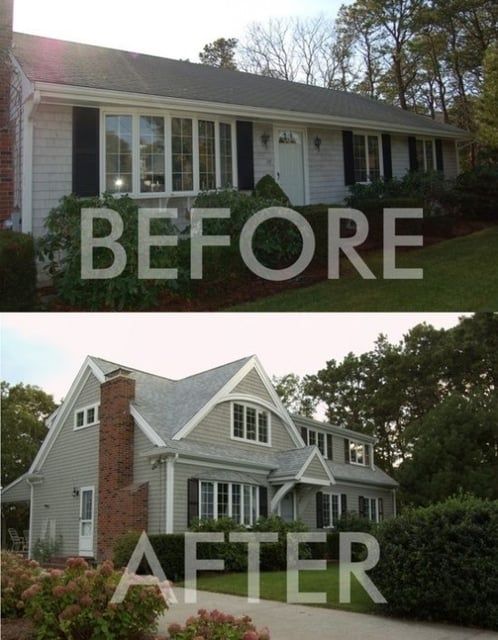Can you add a second floor to a ranch?
Yes, it’s possible to add a second floor to a ranch-style home, but it typically involves a significant renovation and structural modifications. Here are some considerations for adding a second floor to a ranch-style house:
- Structural Assessment: Before anything else, it’s crucial to assess the existing structure’s capacity to support a second floor. A structural engineer will evaluate the foundation, walls, and load-bearing capacity to determine if modifications are needed to handle the additional weight.
- Design and Architecture: Work with an architect to design the second-floor addition. The goal is to create a design that blends seamlessly with the existing ranch-style architecture. This includes considerations for exterior aesthetics, rooflines, and overall harmony with the original design.
- Building Codes and Permits: Obtain the necessary permits and ensure compliance with local building codes. Regulations may dictate specific requirements for adding a second floor, such as setback distances, height restrictions, and safety standards.
- Utilities and Services: Evaluate how the addition will impact existing utilities such as plumbing, electrical wiring, and HVAC systems. Upgrading these systems to accommodate the new floor might be necessary.
- Staircase Access: Plan for proper staircase access to the second floor. This might involve reconfiguring the layout of the first floor to accommodate stairs leading to the new level.
- Cost Considerations: Adding a second floor to a ranch-style home is a major renovation that can be costly. Consider factors such as construction materials, labor, design complexity, and any unforeseen structural issues that might arise during the project.
- Disruption and Timeline: Understand that adding a second floor involves significant construction work, which can disrupt your daily life. Consider the timeline for the project and how it might affect your living situation during the renovation.
- Resale Value: Assess whether the investment in adding a second floor aligns with the potential increase in the property’s value. Sometimes, the costs of renovation might not translate to a proportional increase in resale value.
It’s essential to work with experienced professionals—a structural engineer, architect, and contractor—to plan and execute the project effectively. They can provide guidance, expertise, and ensure that the addition meets safety standards, building codes, and your aesthetic preferences while being structurally sound.
What to consider before adding a second floor

Is it cheaper to add a second story or build out?
The cost of adding a second story versus building out (expanding the ground floor) can vary significantly based on various factors:
Adding a Second Story:
- Foundation and Structural Work: This often involves reinforcing the existing foundation to support the additional weight. Structural modifications are necessary, which can add to the cost.
- Roof and Framing: Creating a new roof and framing for the second story can be complex and may require significant labor and materials.
- Stairs and Access: Building stairs or incorporating an elevator for access to the second floor adds to the overall cost.
- Integration with Existing Systems: Adapting existing utilities like plumbing, electrical, and HVAC to accommodate the second floor might require updates or extensions, adding to the expenses.
Building Out:
- Foundation Work: Depending on the extension’s size and location, foundation work might still be necessary, but it might be less extensive compared to adding a second story.
- New Walls and Roof Extensions: Building outward requires new walls, extending the roof, and creating additional floor space. The cost will depend on the size and complexity of the extension.
- Integration with Existing Systems: Like adding a second story, expanding the ground floor will also require adapting existing utilities, which might involve less extensive modifications compared to a second story.
The cost comparison between adding a second story and building out can vary depending on factors such as local labor costs, materials, the complexity of the project, and any additional structural modifications required.
In general, building out might be less expensive initially because it doesn’t involve major structural changes like reinforcing foundations or constructing an entirely new roof. However, costs can escalate based on the size and complexity of the ground floor extension.
Adding a second story could be more cost-effective per square foot because it utilizes the existing foundation and roof to some extent, but it often involves more intricate structural work and might initially seem more expensive due to the extensive modifications required.
It’s essential to consult with architects, contractors, and structural engineers to get accurate estimates for both options based on your specific property and needs before deciding which option is more cost-effective for your situation.

Are you ready to take the next step to buy(or sale) your home and start building a legacy for your family?…Let me help you!
“Your Dream Home is my Mission”. I am a Brazilian Licensed Realtor at Re-Connect, LLC with 18+ years of experience in the Real Estate industry. I speaks 3 languages (Portuguese, English, Spanish). Let me join your journey in the Real Estate Industry, and receive my assistance above and beyond to accomplish your DREAM!
CALL NOW: (617) 201-9188 Ana Roque | 100 Grove St. Suite 210 Worcester MA 01605






